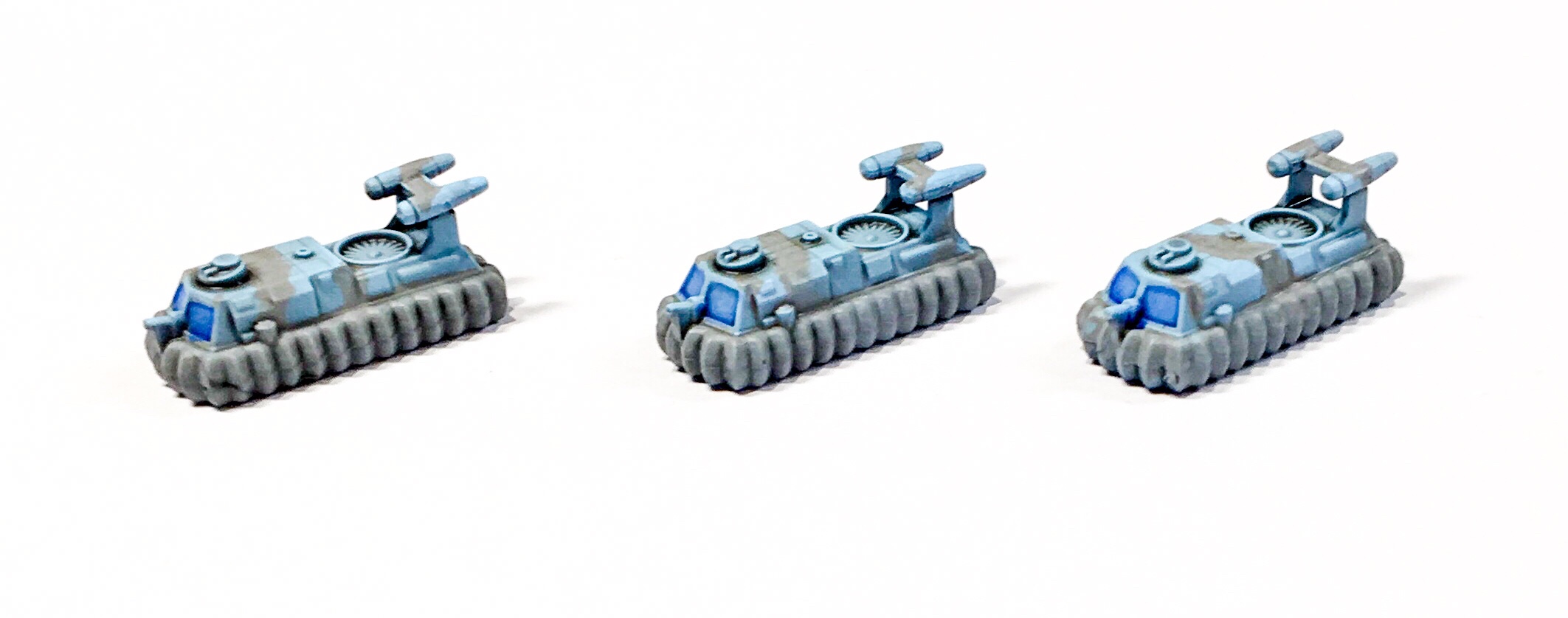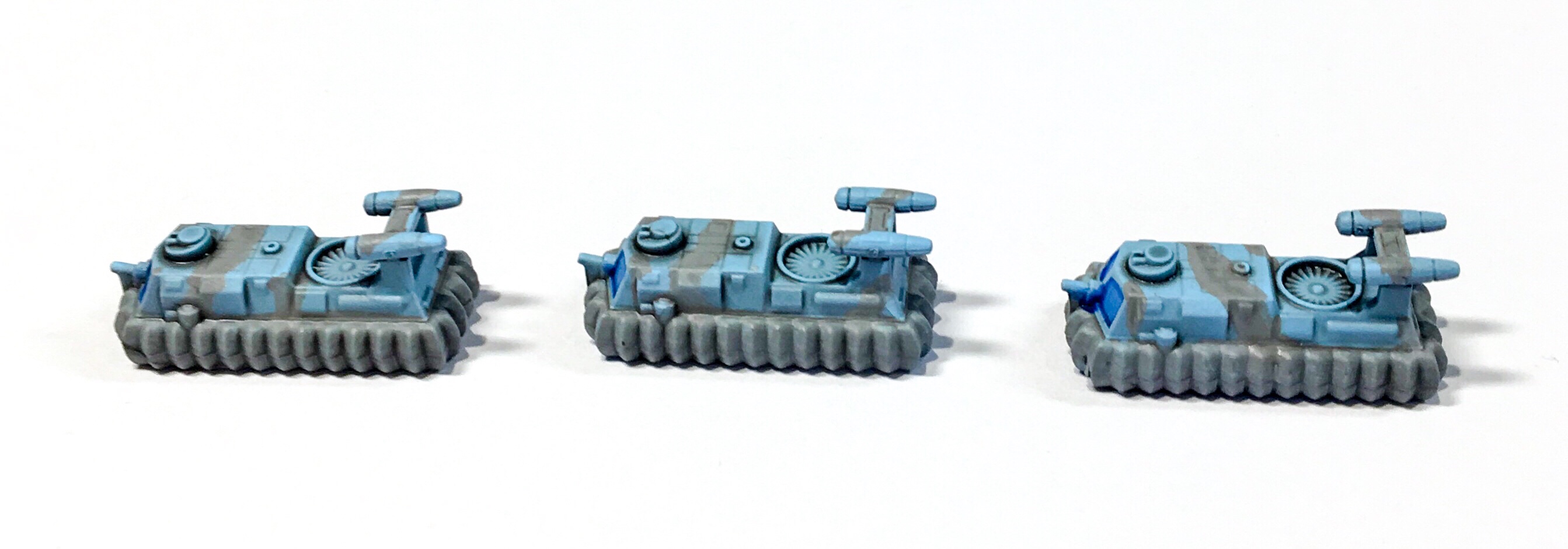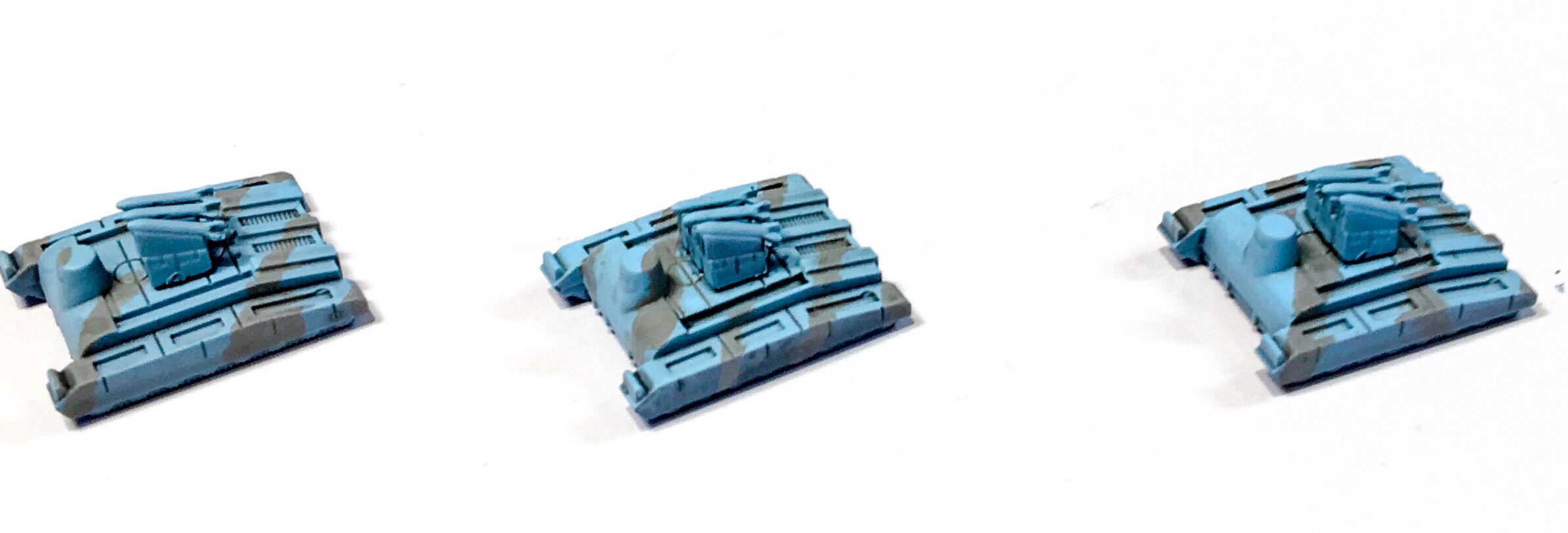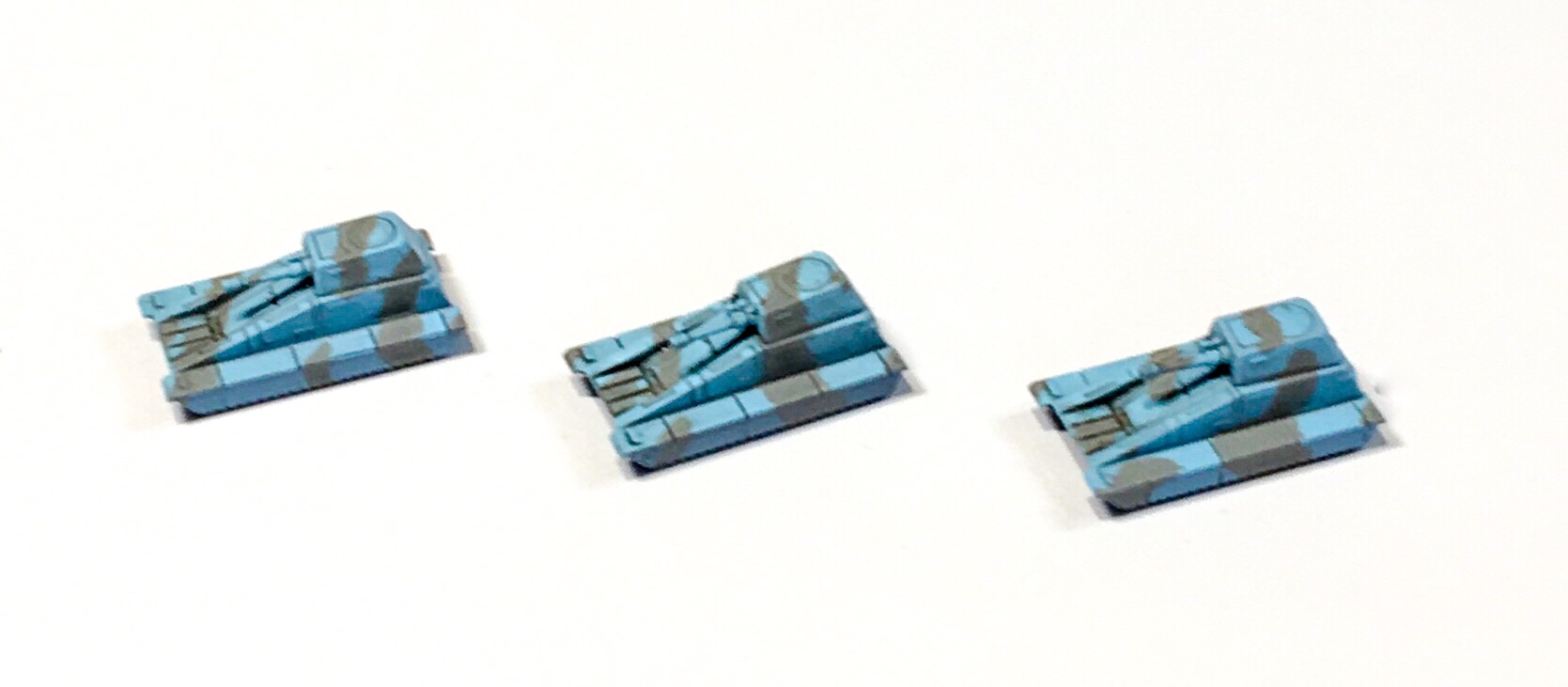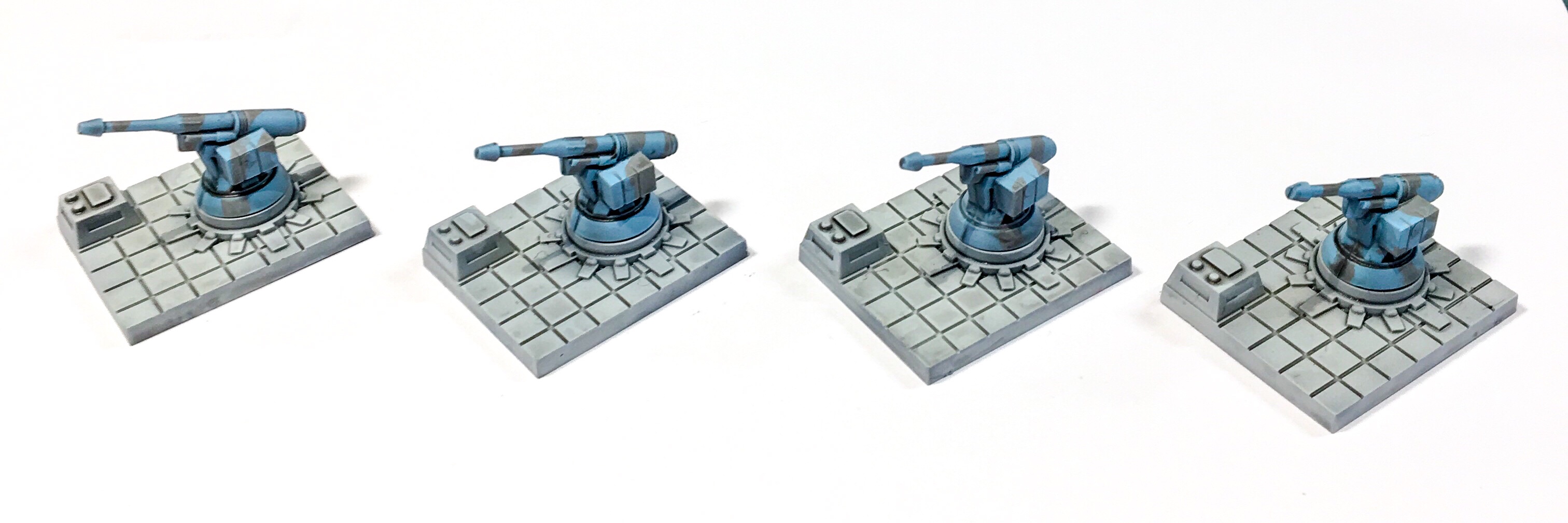- Step 1: Select Color Scheme
- Step 2: Setup (5 minutes)
- Step 3: Assemble the Models (15 minutes)
- Step 4: Prime the Models (5 minutes)
- Step 5: Base Coat (10 minutes)
- Step 6: Apply Camouflage and GEV Skirts (45 minutes)
- Step 7: Apply Wash (15 minutes)
- Step 8: Spray Flat Clear Coat (5 minutes)
- Step 9: Paint GEV Windows (5 minutes)
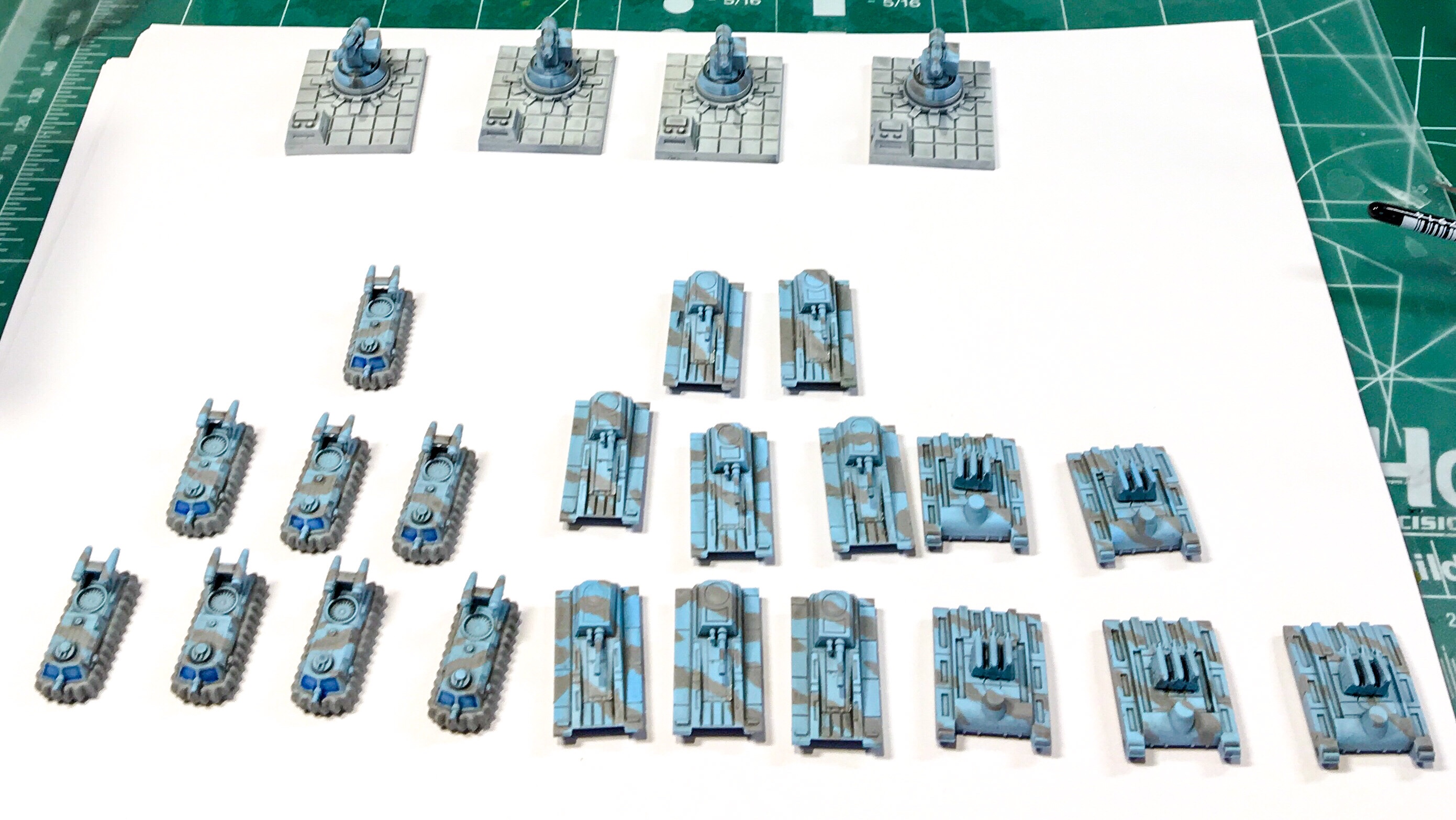
Speed Painting 6mm Plastic Ogre Miniatures: 24 Models in 105 minutes (1.75 hours) – (4.4 minutes per model)
My painting techniques are designed to obtain the best results while spending minimal time. There’s a whole universe of gorgeously painted miniatures out there. But I’m a gamer, not a modeler. I don’t have time to spend an hour or more on one model.
This tutorial is different from the previous tutorial in that it doesn’t rely on an airbrush.
Models
The models were the AFVs and howitzers from the new plastic Ogre miniatures from Steve Jackson Games (Set 1):
- 8 x GEV
- 5 x Missile Tanks (the Set was missing one missile launcher so I only painted 5 missile tanks)
- 8 x Heavy Tanks
- 4 x Howitzers
Paint
- Primer – Krylon Flat White Spray Paint
- Base coat – Liquitex Cobalt Blue Hue 6 (or any light blue spray paint)
- Base coat – Vallejo Model Color 961 Sky Blue (if you choose to brush paint the models)
- Camouflage/GEV Skirts – Vallejo Model Color 870 Medium Sea Grey (GEV skirts and camouflage)
- Howitzer Base – Testor’s Model Master Camouflage Grey spray paint)
- GEV Windows – Citadel Guilliman Blue Glaze
- Clear Coat – Army Painter Matte Shine Spray Varnish
- Magic Black Wash (Future floor wax and Vallejo Game Ink Black)
Step 1: Select Color Scheme
I looked through my camouflage sample notebook (hundreds of top view camouflage schemes, sized for 6mm miniatures). I did a “study” – a sheet of paper with various paint schemes. I decided to use a light blue base with gray camouflage.
Step 2: Setup (5 minutes)
Before starting, I assembled all materials and tools I’d need — brushes, paint, washes (already pre-mixed), etc. — and cleared the workspace.
Step 3: Assemble the Models (15 minutes)
I used Testor’s liquid cement super glue to glue on all turrets and other stuff. The models had no flash and went together easily. The plastic is a little slick and of course, very light. I dropped the GEV engines repeatedly. One missile tank was missing a missile launcher so I only built 5 missile tanks.
Step 4: Prime the Models (5 minutes)
I primed the models with Krylon Flat White.
Step 5: Base Coat (10 minutes)
I sprayed Liquitex Cobalt Blue Hue 6 on as a base coat. I sprayed Testors Model Master Camouflage Grey as the base coat for the howitzer bases. I tested brush painting the base coat on, using Vallejo Model Color Sky Blue, thinned 1:1 with Future Floor Wax. Two thin coats were required. It took about 45 seconds total for a single model, so I’d estimate it would take about 20 minutes for all 25 models.
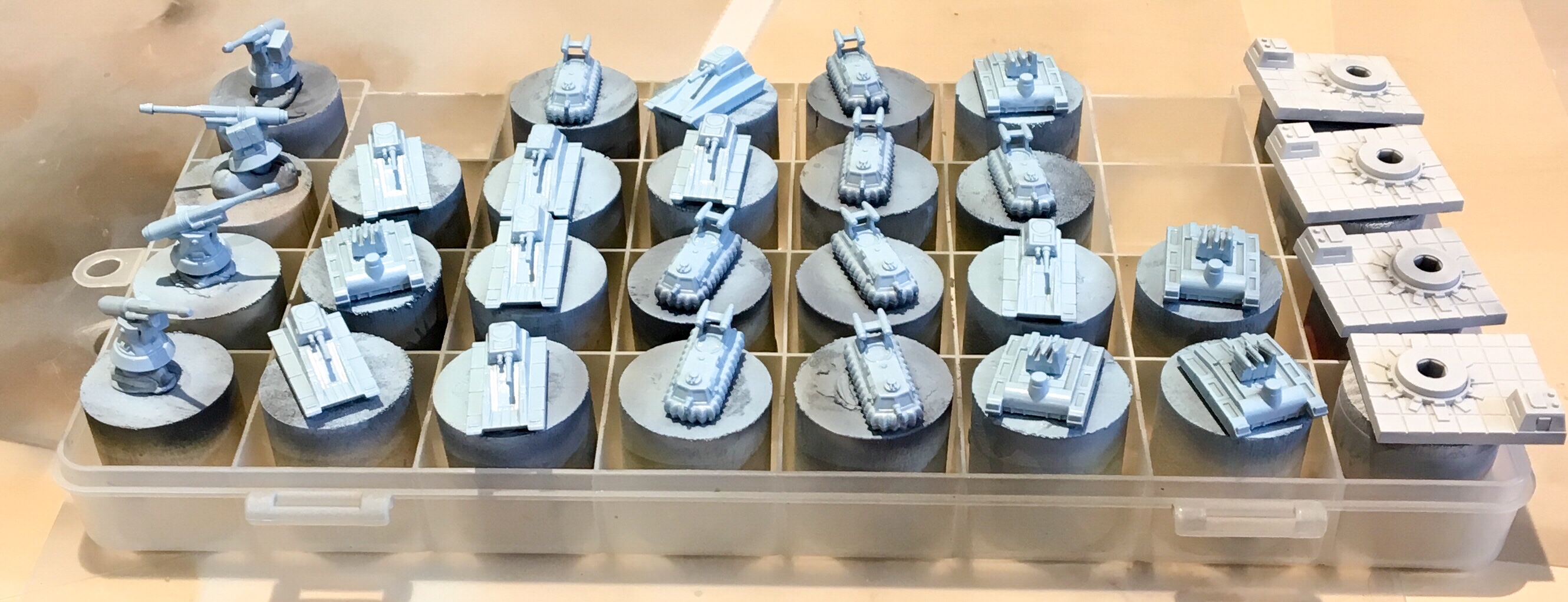
Step 6: Apply Camouflage and GEV Skirts (45 minutes)
I thinned the Vallejo Model Color Sea Grey with Future floor wax (about 1:1 ratio) and applied to the GEV skirts and as gray camouflage. While waiting for the Sea Grey to dry, I washed the howitzer bases with Magic Black Wash.
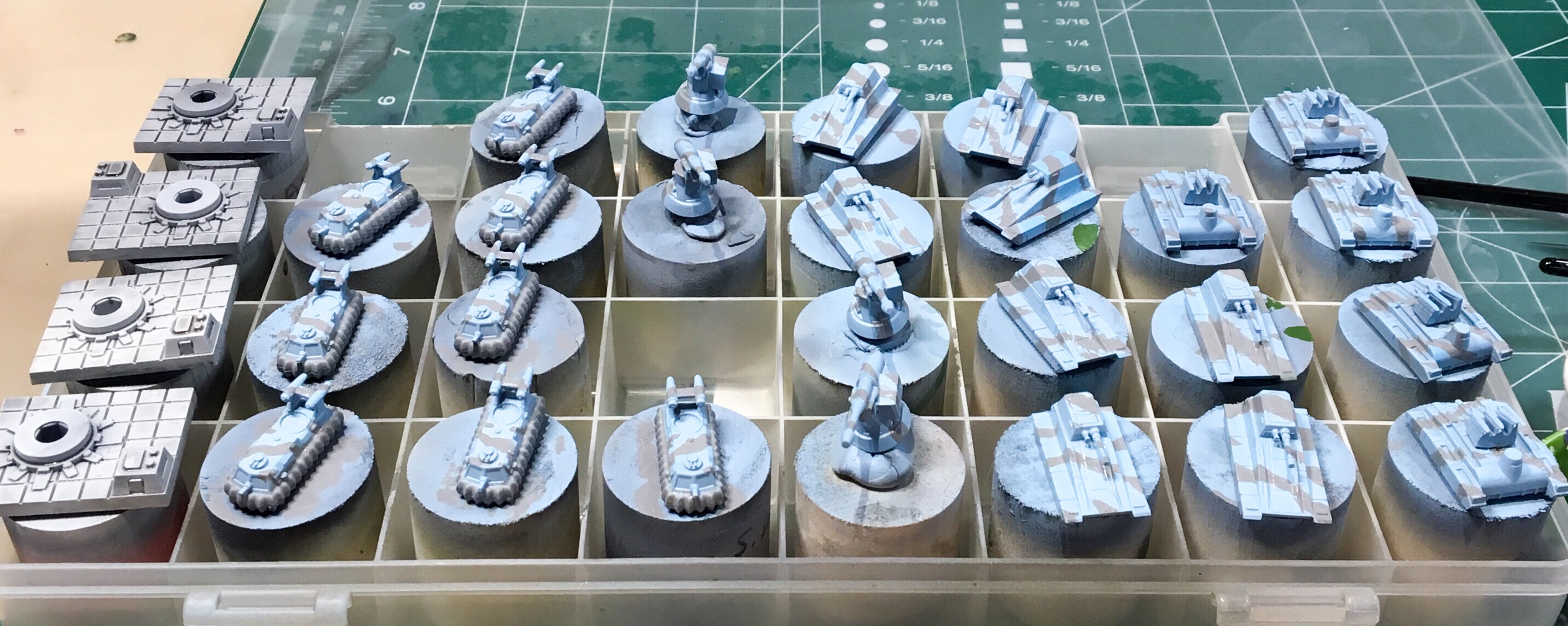
Step 7: Apply Wash (15 minutes)
Using my pre-mixed magic black wash, I applied the wash to each model, being careful to keep it from pooling on the large flat areas. The wash takes awhile to dry, so I took a break and straightened up my workbench.
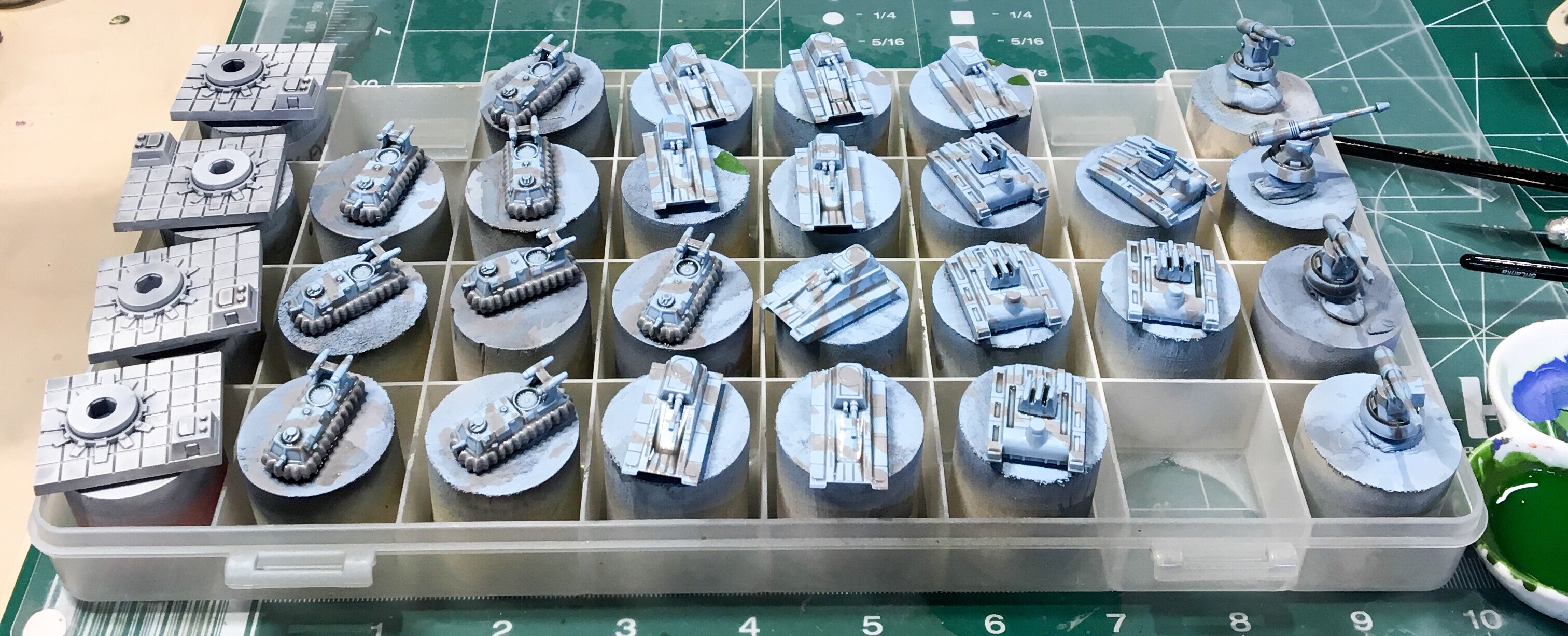
Step 8: Spray Flat Clear Coat (5 minutes)
I sprayed the models with Army Painter Matte Shine Spray Varnish.
Step 9: Paint GEV Windows (5 minutes)
Using a fine brush, I applied Citadel Guilliman Blue Glaze to the GEV windows.
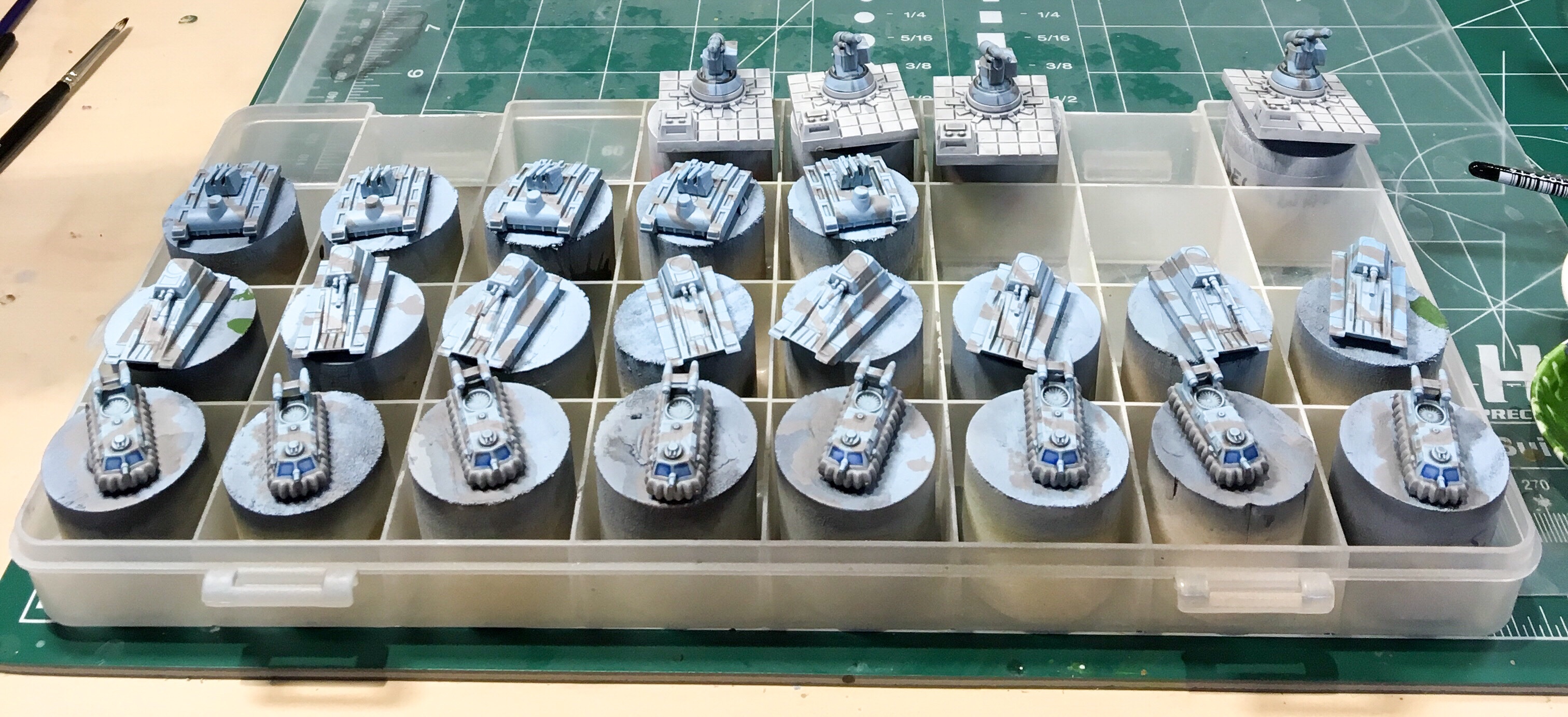
Total Time — 1 hour, 45 minutes, 4.4 minutes per model.
Addendum – There are several relatively quick enhancements that I could do later:
- Paint missiles a different color (I estimate 9 minutes for 6 models)
- Paint heavy tank guns black, then drybrush with steel color (I estimate 8 minutes for 8 models)
- Paint howitzer barrels with black, then dry brush with steel color (I estimate 5 minutes for 4 models)
- Respraying matte coat would take a few minutes.
Doing all of these things would add a half hour or so of painting. The modules would look a little better, but in the same amount of time, I could paint another 8-9 models to the current standard. That is the secret of speed painting – figuring out what has the best effect for the least amount of time.
